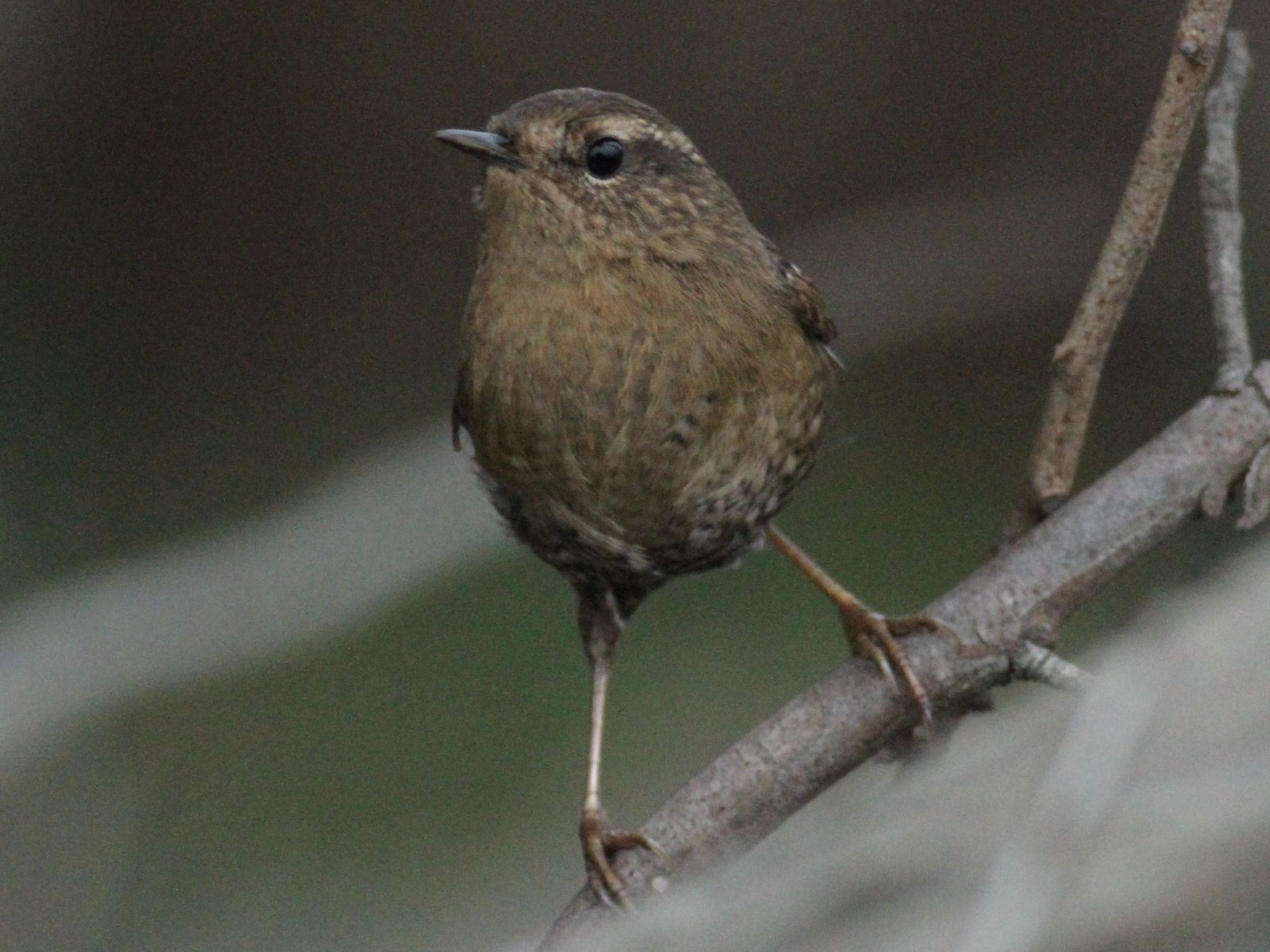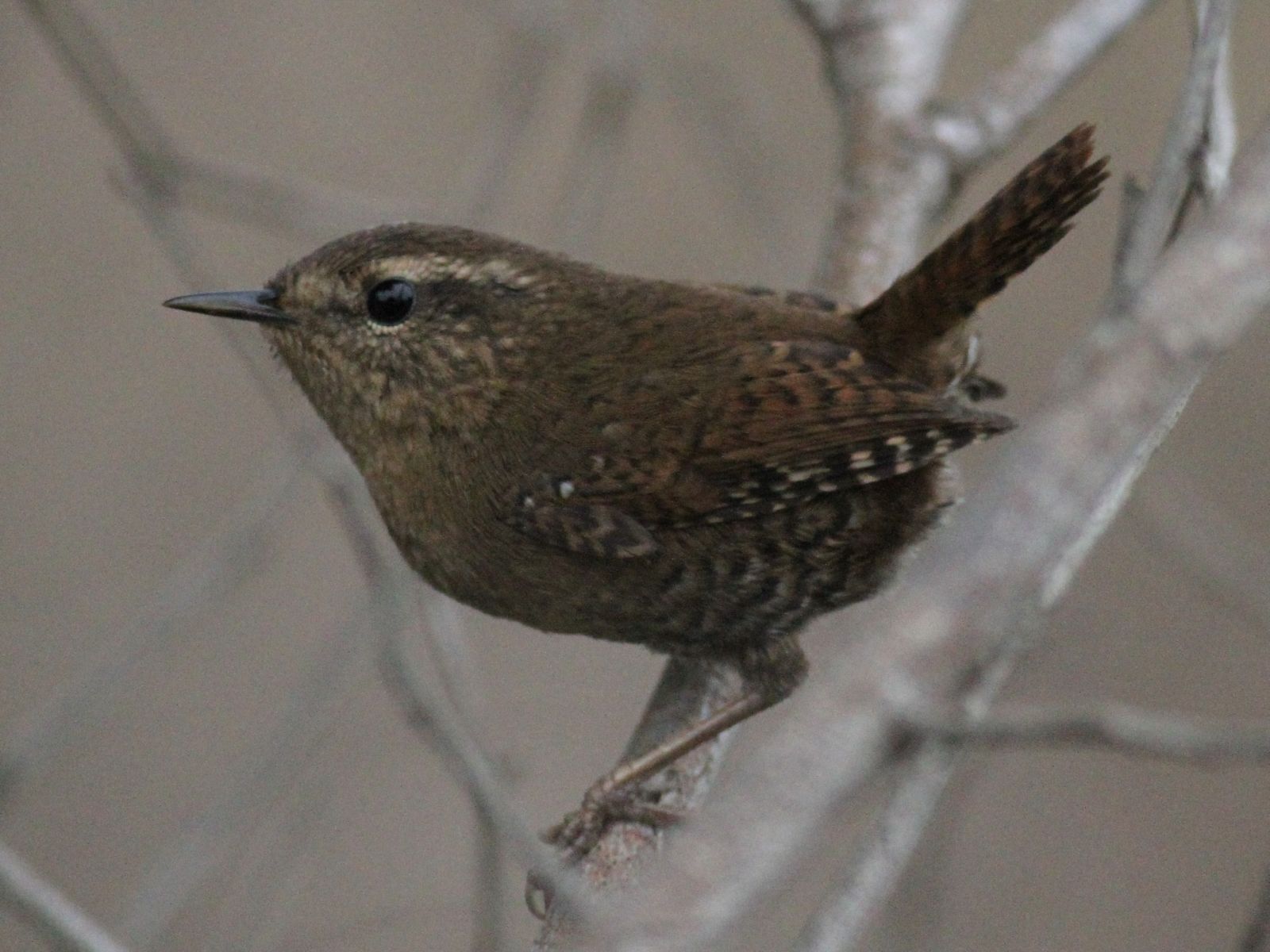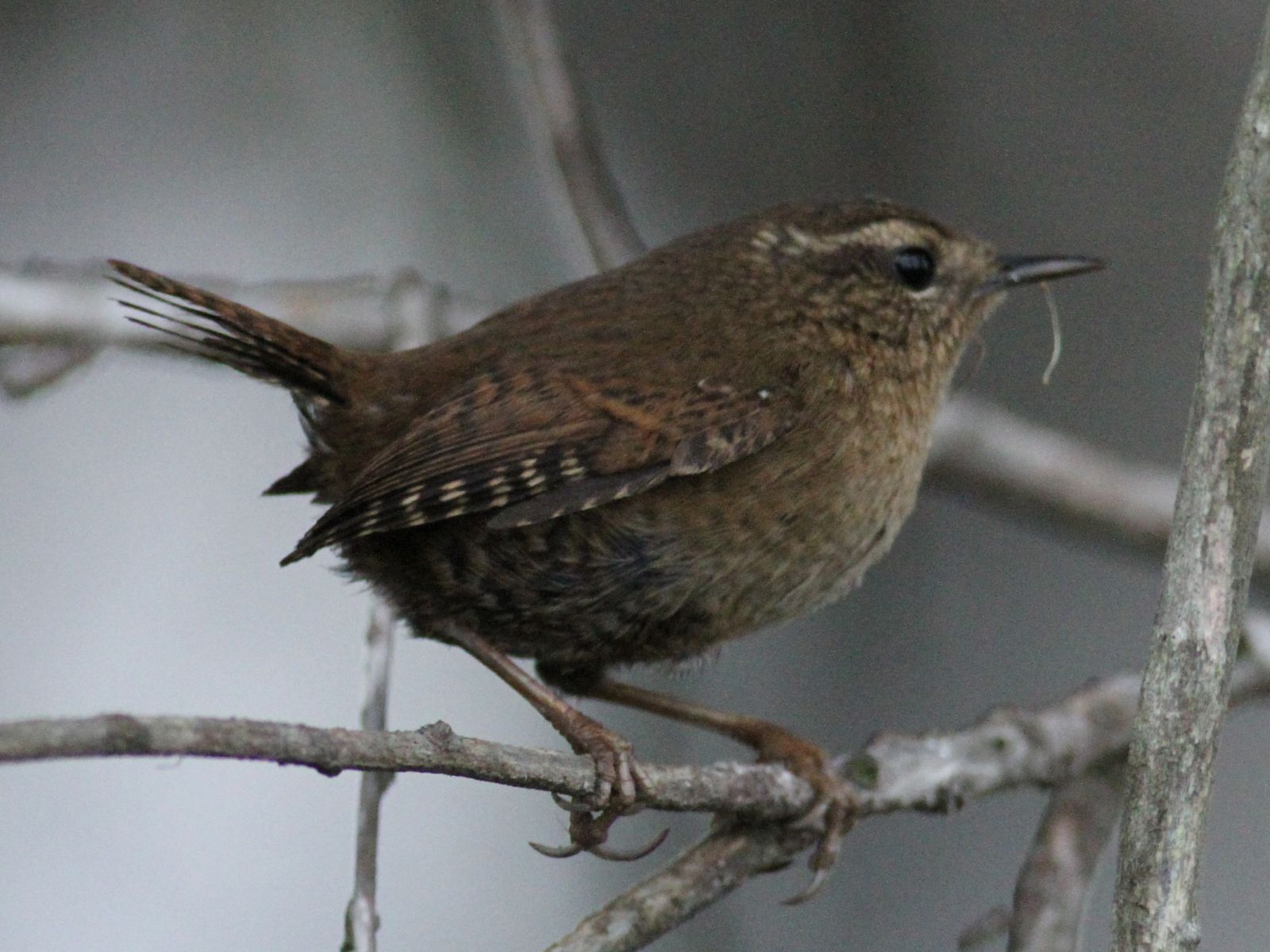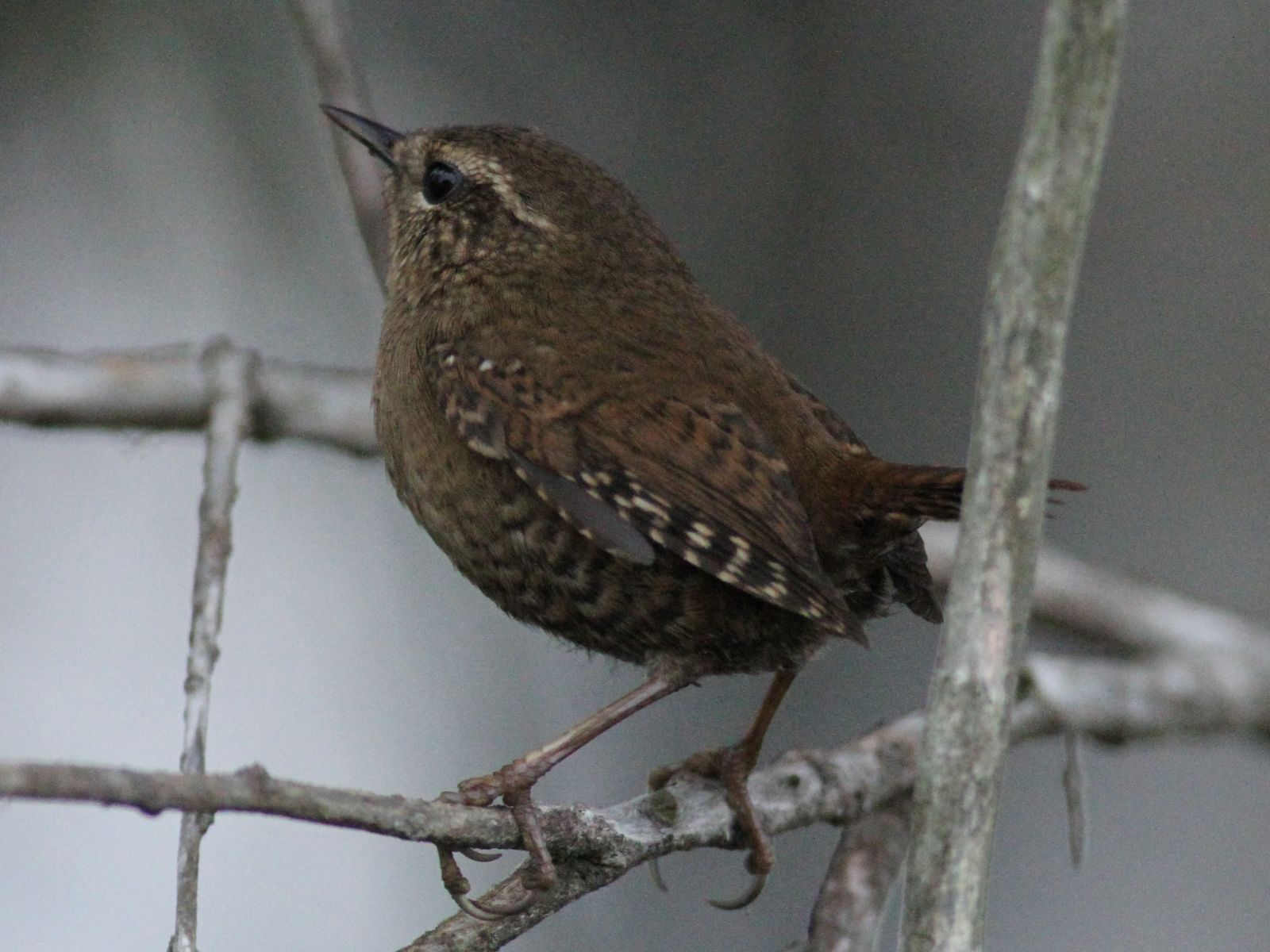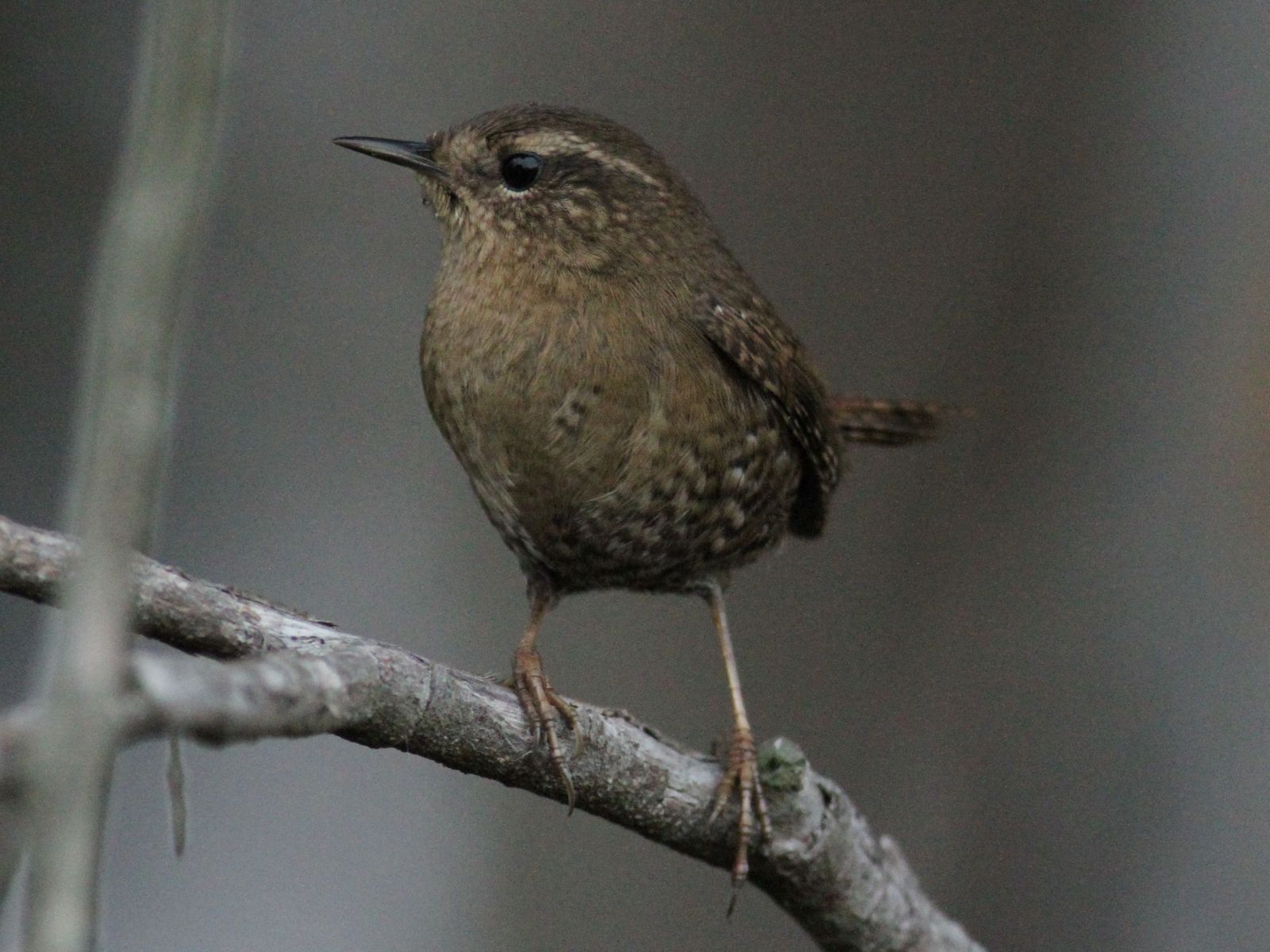[All photographs copyright, Gary Nunn 2012] – The first bird I saw today turned out to be the most interesting, but even with my Canon 7D dialed up to ISO6400 there was still no way I could see it on the image sensor! Before dawn I wandered down to the east side wall at Fort Rosecrans National Cemetery and up pops the unmistakable cock-tailed, big legged silhouette of a Troglodytes wren literally just a few feet away! It was more than an hour later when I finally managed to return there, in marginally better light, and capture these close up photographs of a Pacific Wren Troglodytes pacificus excitedly chattering around me among dead twigs and branches.
The Pacific Wren is a recent split after elevating both forms of the North American continent wide ranging Winter Wren to species level. A diversity of forms of this wren exist around the northern hemisphere temperate latitudes and in 2010 the 51st supplement to the AOU Checklist (July 2010) split and elevated to species level both of the North American forms pacificus (Pacific Wren) and hiemalis (Winter Wren).
Any Troglodytes wren encountered in San Diego deserves careful scrutiny to distinguish between the two species – Pacific Wren versus Winter Wren – both of which have been recorded here in recent years. The much rarer Winter Wren can be told by its lighter colored frosting on the under parts, more extensive barring on the flanks, and less rufous overall coloration in comparison to the richly colored, and more frequently encountered Pacific Wren. In addition the two species have distinct vocalization differences including contact or alarm calls and songs.
The Pacific Wren is a rare visitor to San Diego County and was most recently seen here in the county with a long staying individual at the San Diego Botanical Gardens last winter (2011-2012). San Diego Field Ornithologists considers this species a Category C rarity in the county.

